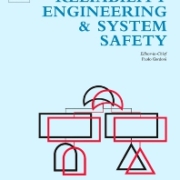Research paper accepted by Reliability Engineering and Systems Safety
In this paper, we develop a generic physics-informed neural network (PINN)-based framework to assess the reliability of multi-state systems (MSSs). The proposed framework follows a two-step procedure. In the first step, we recast the reliability assessment of MSS as a machine learning problem using the framework of PINN. A feedforward neural network with two individual loss groups is constructed to encode the initial condition and the state transitions governed by ordinary differential equations in MSS, respectively. Next, we tackle the problem of high imbalance in the magnitudes of back-propagated gradients from a multi-task learning perspective and establish a continuous latent function for system reliability assessment. Particularly, we regard each element of the loss function as an individual learning task and project a task’s gradient onto the norm plane of any other task with a conflicting gradient by taking the projecting conflicting gradients (PCGrad) method. We demonstrate the applications of the proposed framework for MSS reliability assessment in a variety of scenarios, including time-independent or dependent state transitions, where system scales increase from small to medium. The computational results indicate that PINN-based framework reveals a promising performance in MSS reliability assessment and incorporation of PCGrad into PINN substantially improves the solution quality and convergence speed of the algorithm.
Research paper accepted by Transportation Research Part C
Collisions during airport surface operations can create risk of injury to passengers, crew or airport personnel and damage to aircraft and ground equipment. A machine learning model that is able to predict the trajectories of ground objects can help to diminish the occurrences of such collision events. In this paper, we pursue this objective by building a spatial-temporal graph convolutional neural network (STG-CNN) model to predict the movement of objects/vehicles on the airport surface. The methodology adopted in this paper consists of three steps: (1) Raw data processing: leverage Apache Spark to parse a large volume of raw data in Flight Information Exchange Model (FIXM) format streamed from the Surface Movement Event Service (SMES) for the purpose of deriving historical trajectory associated with each object on the ground; (2.1) Graph-based representations of ground object movements: build graph-based representations to characterize the movements of ground objects over time, where graph edges are used capture the spatial relationships of ground objects with each other explicitly; (2.2) Trajectory forecasts of all ground objects: combine STG-CNN with Time-Extrapolator Convolution Neural Network (TXP-CNN) to forecast the future trajectories of all the ground objects as a whole; and (3) Separation distance-based safety assessment: define a probabilistic separation distance-based metric to assess the safety of airport surface movements. The performance of the developed model for trajectory prediction of ground objects is validated at two airports with varying scales: Hartsfield-Jackson Atlanta International Airport and LaGuardia airport, under two different scenarios (peak hour and off-peak hour). Two quantitative performance metrics — Average Displacement Error (ADE) and Final Displacement Error (FDE) are used to compare the prediction performance of the proposed model with an alternative method. The computational results indicate that the developed method has an ADE within the range [7.55, 9.33], and it significantly outperforms an alternative approach that combines a STG-CNN with Convolutional Long Short-Term Memory (ConvLSTM) neural network with an ADE of [15.79, 16.89] in airport surface movement prediction, thus facilitating more accurate safety assessment during airport surface operations.
Research paper accepted by Advanced Engineering Informatics
Teams formulated by aviation professionals are essential in maintaining a safe and efficient aerodrome environment. Nonetheless, the shared situational awareness between the flight crews under adverse weather conditions might be impaired. This research aims to evaluate the impact of a proposed enhancement in communication protocol on cognitive workload and develop a human-centred classification model to identify hazardous meteorological conditions. Thirty groups of subjects completed four post-landing taxiing tasks under two visibility conditions (CAVOK/CAT IIIA) while two different communication protocols (presence/absence of turning direction information) were adopted by the air traffic control officer (ATCOs). Electroencephalography (EEG) and the NASA Task Load Index were respectively used to reflect the pilot’s mental state and to evaluate the pilot’s mental workload subjectively. Results indicated that impaired visibility increases the subjective workload significantly, while the inclusion of turning direction information in the ATCO’s instruction would not significantly intensify their cognitive workload. Mutual information was used to quantitatively assess the shared situational awareness between the pilot flying and the pilot monitoring. Finally, this research proposes a humancentred approach to identify potentially hazardous weather conditions from EEG power spectral densities with Bayesian neural networks (BNN). The classification model has outperformed other baseline algorithms with an accuracy of 66.5%, an F1 score of 61.4%, and an area under the ROC of 0.749. Using the concept of explainable AI with Shapley Additive Explanations (SHAP) values, the exploration of latent mental patterns formulates novel knowledge to gain insights into the vital physiological indicators of the pilots in response to different scenarios from the BNN model. In the long term, the model facilitates the decision regarding the necessity of providing automation and decision-making aids to pilots.




